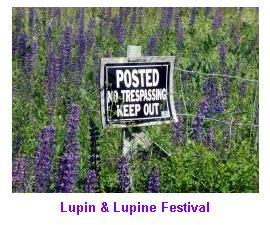Our Evolving Understanding of "Rock Snot"
Is It Native, Invasive or Evolving?
Concord, NH - In the summer of 2007, The New Hampshire Department of Environmental Services (NHDES) issued an alert about an invasive algae "Didymosphenia geminata" also known as "rock snot" or "Didymo." The algae had been found in the northern reaches of the Connecticut River as well as in the White River near Bethel, Vermont. Beyond New Hampshire, other similar blooms had been documented in rivers in Western Canada, Norway, New Zealand, and in other parts of the United States.
Didymo is a freshwater species of diatom, which has the potential to "bloom" and form dense matted carpets of fibrous growths on the rocks linking stream and river beds. Not only does such a bloom detract from the aesthetics of a river, but it can cause physical, biological, and chemical changes in the river, ultimately impacting the aquatic food web.
The presence of this algal species in trophy trout reaches of many infested streams led to the hypothesis that anglers and their gear were the primary vector of spread, namely the use of felt soled waders which could harbor these tiny diatoms in a moist environment from river to river. As a result, for many years now, Didymo has been on many states' watch lists for prevention and early detection. No reliable control or eradication methods were known or documented.
A chain reaction of responses ensued after the global recognition of Didymo as an invasive species. Enhanced educational activities were implemented, new laws and quarantines were established, and a critical evaluation of waders was performed, leading to a recommendation to phase out the use of felt-soled waders and to switch to other designs which would pose a lower risk for harboring tag-along species. Industry also responded by providing alternatives to felt-soled waders, while outdoor outfitters, anglers, biologists and others have set aside the sure-footed safety of felt in lieu of other more ecologically friendly options.
Recent research by Dr. Max Bothwell suggests that the previous assumptions about Didymo and its spread may be incorrect. Employed by Environment Canada in British Columbia, Dr. Bothwell has extensively studied Didymo since its appearance in British Columbia in 1989, and he has collaborated with New Zealand researchers on cutting edge science related to this species. His new data refute the notion that Didymo is a non-native, invasive species, based on data from sediment cores showing the presence of Didymo as far back as 10,000 years in some areas. Dr. Bothwell's data show that these Didymo fossil records exist globally, and that in New Zealand and Western Canada, Didymo was present in streams in low number well before blooms of this species were documented. In his newest publication, Bothwell argues that blooms are caused by changes in environmental conditions, specifically by reduced levels of available phosphorus in streams.
His hypothesis for this species is contrary to what most freshwater biologists commonly accept as fact; that the addition of nutrients leads to algal blooms, not the other way around. Didymo, however, appears to have a special adaptation of producing a stalk that allows it to regulate it's depth in the water column, to optimize its ability to obtain low levels of phosphorus from the water. Much like a plant can extend its stalk to grow higher above neighboring plants to capitalize on sun exposure, Didymo secretes a stalk (which is viewed as the "bloom" material on river bottoms), perhaps for a very similar purpose, but for nutrient acquisition.
Bothwell's hypothesis is that Didymo may be present in normal algal communities in a stream when phosphorus is above a certain threshold, but when phosphorus concentrations dip unusually low, the alga can trigger stalk production resulting in what we consider a bloom.
Amy Smagula, a Limnologist and the Exotic Species Program Coordinator for the NHDES indicated that "Unfortunately phosphorus levels, particularly dissolved phosphorus, which Didymo uses, are not routinely monitored in the Connecticut River, so we do not have a good local dataset to use to compare phosphorus levels to local Didymo blooms. Dissolved forms of phosphorus are typically very low, and often below detection limits for current equipment."
While the status of Didymo may be changing from that of an invasive species to one of a native species responding to changes in environmental conditions, the risk of spread of other potentially problematic aquatic species has not changed.
Despite the new information on Didymo, NHDES does continue to urge caution when using gear across a number of waterbodies. There are other species that are certainly non-native and invasive that could hitch a ride on felt soled waders or other recreational gear; therefore, care is needed in order to help protect New Hampshire's natural aquatic resources.
Jason Smith, Chief of the Inland Fisheries Division at the New Hampshire Fish and Game Department cautions that "Although these recent findings suggest that Didymo is indigenous, this does not alleviate anglers and boaters' of their responsibility to help prevent the spread of other aquatic invasive species and pathogens that may cause disease in fish or other aquatic organisms. There are other aquatic invasive species and pathogens that are putting NH's water resources at risk. The same recommended protocols of disinfecting and drying equipment should remain in place."
Whether it is an aquatic invasive alga, plant, animal or pathogen, NHDES strongly encourages that anglers, boaters and other water-based recreation enthusiasts employ the practice of "Clean, Drain, Dry" to ensure that their gear is free and clear of any potential invasive species or other contaminants. Specifically:
CLEAN off any mud, plants, animals and algae from boats, waders, trailers and equipment.
DRAIN your boat, bait buckets, bilges and other equipment away from the waterbody.
DRY anything that comes into contact with the water.
Any plants, animals and algae found during your inspection should be removed and disposed of away from a waterbody.
For more information please contact Amy Smagula, NHDES Limnologist/Exotic Species Program Coordinator at Amy.Smagula@des.nh.gov, or 603-271-2248.
Posted 6/16/16
|















 1
1 2
2 3
3 4
4 5
5




